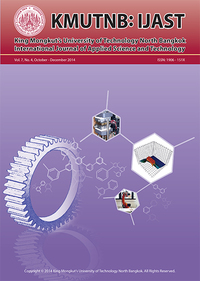Effects of Ground Grid Configuration of Two Neighbouring Distribution Substations on Ground Potential Rise in MEA’s Power System
Main Article Content
Abstract
This paper presents construction planning procedures for a new small (temporary) or permanent distribution substation to replace an existing distribution substation that is served as a small or permanent substation to supply the load of the existing distribution substation while it has not yet been removed. In the meantime when the ground grids of the two substations are electrically disconnected, the auxiliary grounding system of the existing distribution substation can create steep ground potential rise between the ground grids of the two substations and hence introduces a risk for those who are working nearby. It is therefore important to incorporate safety criteria described in terms of step and touch voltage into electrical designs without any potential electrical hazards. Modeling and simulation is carried out on the Current Distribution Electromagnetic interference Grounding and Soil structure (CDEGS) program. A sequential transition process from the existing distribution substation to a new distribution substation is suggested to comply with the IEEE standard 80-2000. The results in this paper could be served a guideline in grounding system design of distribution substation and modification of grounding standards in MEA’s power distribution system.
Article Details
How to Cite
Phayomhom, A., Sirisumrannukul, S., Vigittomrongsak, A., Roopkaew, T., & Ainsuk, B. (2014). Effects of Ground Grid Configuration of Two Neighbouring Distribution Substations on Ground Potential Rise in MEA’s Power System. Applied Science and Engineering Progress, 7(4), 73–80. retrieved from https://ph02.tci-thaijo.org/index.php/ijast/article/view/67457
Issue
Section
Research Articles


